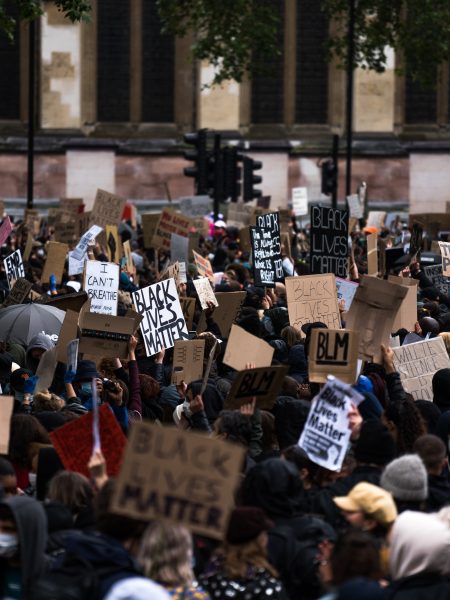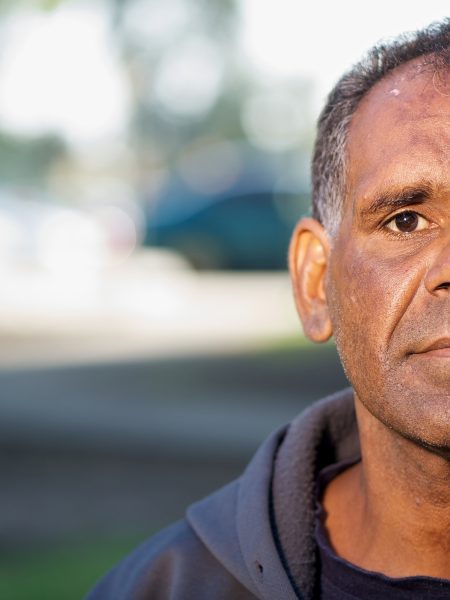Terra Nullius
The origins of racism in Australia can be traced to European invasion in 1788, when the First Fleet arrived at Sydney Cove to settle and occupy the lands they deemed as belonging to no one – a myth we now know as terra nullius.
Sir Joseph Banks, President of the Royal Society and a member of Captain Cook’s expedition of 1770 with great power and influence, declared in his writing and in evidence to Britain’s parliamentary committees that the long coast of eastern Australia was “thinly inhabited even to admiration”. This judgement – a denial of the First Nations cultures, civilisation and sovereignty that existed pre-invasion – was, of course, underpinned by racial superiority and a belief that the First Peoples who had lived in kinship with and been caretakers of the land for 60,000 years were inferior and did not qualify as the land’s inhabitants. They were, in the eyes of British settlers, ‘no one’.
This earliest racist myth, foundational to Australia’s national identity, gained traction then and persists now despite evidence to the contrary. Aboriginal and Torres Strait Islander peoples not only lived in settlements, they developed complex agricultural and land-management systems over thousands of years.
In 1835, forty seven years after the arrival of the First Fleet, Governor Richard Bourke’s Proclamation in NSW implemented the legal principle of terra nullius in Australian law as the basis for British settlement. The Proclamation reinforced the notion that the land belonged to no one prior to possession by the British Crown, and established that no individual person could acquire, sell or assign the land except by distribution through the Crown. In the little-known Privy Council case of Cooper v Stewart in 1889, it was legally established that at the time of first settlement, New South Wales was “a tract of territory, practically uninhabited, without settled inhabitants”. This stood as the legal authority for Australian nationhood for over a century and was not overturned until Mabo v Queensland (No 2) in 1992.
Race in the Constitution
If there was any doubt as to the foundational nature of racism in settler colonial Australia, one need only look to our nation’s rulebook – the Australian Constitution. To begin with, First Nations Peoples were excluded from the drafting of the Constitution. They were also, until the 1967 referendum, explicitly excluded from the Constitution itself, which made no mention of their prior occupation of the lands and still does not recognise their sovereignty or right to self-determination.
Race is embedded into the Constitution in Section 51 (xxvi) – often referred to as the ‘race power’ – which gives parliament the power to make laws for “the people of any race for whom it is deemed necessary to make special laws”. Authorship of Section 51(xxvi) is attributed to Sir Samuel Griffith who outlined its purpose as follows: “The intention of the clause is that if any State by any means gets a number of an alien race into its population, the matter shall not be dealt with by the State, but the commonwealth will take the matter into its own hands”. Griffith went on to say that what he had in mind was the immigration of low-wage labourers from South Asia and the Pacific who were “subject to civilised powers”.
The primary rationale of Section 51 (xxvi) was to protect the racial and cultural homogeneity of the ‘white population’ from ‘alien’ races. Many of the constitutional drafters were very concerned about the immigration of non-white individuals into the states, with the Commonwealth management of such immigration being widely discussed and debated throughout the constitutional conventions. For instance, during the 1898 convention, Edmund Barton, who later became Australia’s first Prime Minister, stated that ‘the race power’ was necessary to enable the Commonwealth to “regulate the affairs of the people of coloured or inferior races who are in the Commonwealth”.
In 1881, the Registrar-General Henry Jordan referred to First Nations Peoples as “unfortunates who seem destined to die out before advancing settlement”. Regarding whether to count Aboriginal and Torres Strait Islander peoples in the census, Jordan remarked: “…if only as a means of delaying for a little time the extinction of the race, or as a question of mere humanity, it seems desirable to know in what proportions they are melting away before the onward march of civilization”.
Racism in law and policy
As if enshrining race in the Constitution weren’t enough, Australia has a history of Federal and State law and policy-making based on race and intended to exert control over First Nations Peoples, often under the guise of protection. One of the earliest pieces of legislation introduced to Australia’s newly formed Parliament in 1901 was the Immigration Restriction Act, a law specifically designed to limit non-British migration to Australia. It represented the formal establishment of the White Australia policy based on the discriminatory belief that non-white groups – including First Nations peoples – were less advanced morally and intellectually and therefore inferior to white people.
In Victoria, the Aboriginal Protection Act 1869 established the Victorian Central Board for the Protection of Aborigines, making Victoria the first colony to enact comprehensive regulations on the lives of First Nations Peoples in Victoria. The Act gave the Board extensive powers over the lives of Aboriginal and Torres Strait Islanders in the state, including regulation of residence, employment, marriage, social life, custody of children and other aspects of daily life.
In NSW, the Aborigines Protection Act 1909 gave the States’ Aboriginal Protection Board control of the Aboriginal reserves in New South Wales, and those that occupied them. Later amendments to the Act gave the Aborigines Protection Board in New South Wales broad powers to remove Aboriginal children from their families, resulting in the Stolen Generations.
The Northern Territory National Emergency Response Act 2007 (also known as the NT ‘Intervention’), under the guise of ‘protection’ of First Nations children, placed restrictions on the consumption of alcohol, changes to welfare payments, and changes to the delivery and management of education, employment and health services in the Territory. The Intervention also introduced compulsory leases of First Nations-owned land, giving the government “exclusive possession” of land through five-year leases during which they can demolish, repair or replace any existing building without the consent of the owners.
The Government suspended the application of the Racial Discrimination Act and the NT anti-discrimination laws in order to enact harsh penalties and to remove customary laws in certain areas of the territory under the Intervention. These measures – underpinned by racism – were justified by Government as an emergency response to the Little Children are Sacred report, published as the findings of an inquiry into child sexual abuse commissioned by the NT Government.
The former human rights commissioner Gillian Triggs called the Intervention a violation of international law, while Yawuru elder and Senator Patrick Dodson called the policies “a regime of coercive paternalism”. Northern Territory Attorney-General Chansey Paech called the measures contained in the intervention “racist”. An independent report by the Castan Centre for Human Rights at Monash University found that the Intervention failed to meet Australia’s international human rights obligations and that racial discrimination against First Nations peoples remains prevalent.








